Part of a series of articles titled Park Paleontology News - Vol. 12, No. 1, Spring 2020.
Article
The Second Bank of the United States: Ordovician Fossils in 19th Century Flooring

Independence National Historical Park, Pennsylvania
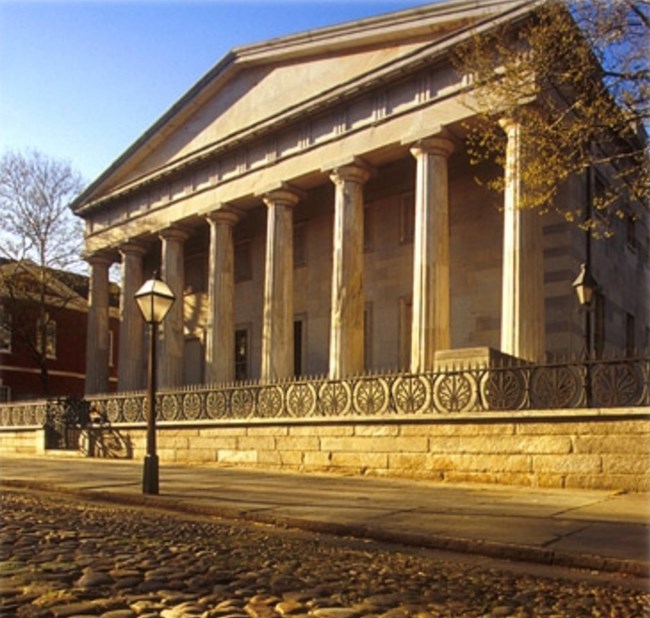
NPS photo.
Millions of visitors come to Independence National Historical Park each year seeking to learn about the founding of the United States. What they do not expect to find are fossils that are 488–443 million years old in a 19th century bank. The Second Bank of the United States was built in 1819–1824, in the heart of Old City Philadelphia very near to Independence Hall. This Greek Revival building housed the Federal Bank until 1836 when the bank’s charter expired. In 1845, the building was converted to a U.S. Custom House. In the early 1860s, the building underwent a vast renovation to make more offices. During this time a new tile floor was laid. Once the National Park Service took ownership of the building in 1939, years of stories were told about the strange markings in the floor of the Second Bank. In 2018, research began on the 1860s flooring materials of the building to try to determine what kind of fossils were in the flooring and where the tile originated from.
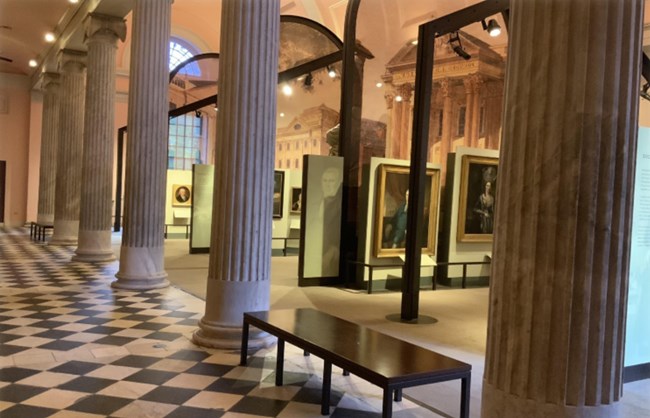
NPS Photo.
The main banking room floor of the Second Bank features a tessellated pattern of black and white tiles that, for a long time, were thought to be marble. Based on comparisons with other nineteenth century structures, north-western Vermont’s Isle La Motte Fisk Quarry (Crown Point Formation) is the most likely source of the black fossiliferous limestone used for floor tiles in the Second Bank. This is confirmed by the species of fossils found in the Bank floor. What is now modern-day Vermont was covered by the Chazy Reef, which formed beneath a warm tropical sea filled with a menagerie of invertebrates during the Ordovician Period (488–443 mya). The Fisk Quarry was world-famous for its black stone, a popular and durable building material used in many structures such as Radio City Music Hall, the Ohio State House, Smithsonian Castle, and the U.S. Capitol building. Today the quarry is part of Chazy Fossil Reef National Natural Landmark.
Types of Fossils
There are a range of fossils that have been identified based on cross sections that are present in the floor tiles. The most recognizable fossil present is the gastropod (snail) Maclurites magna.
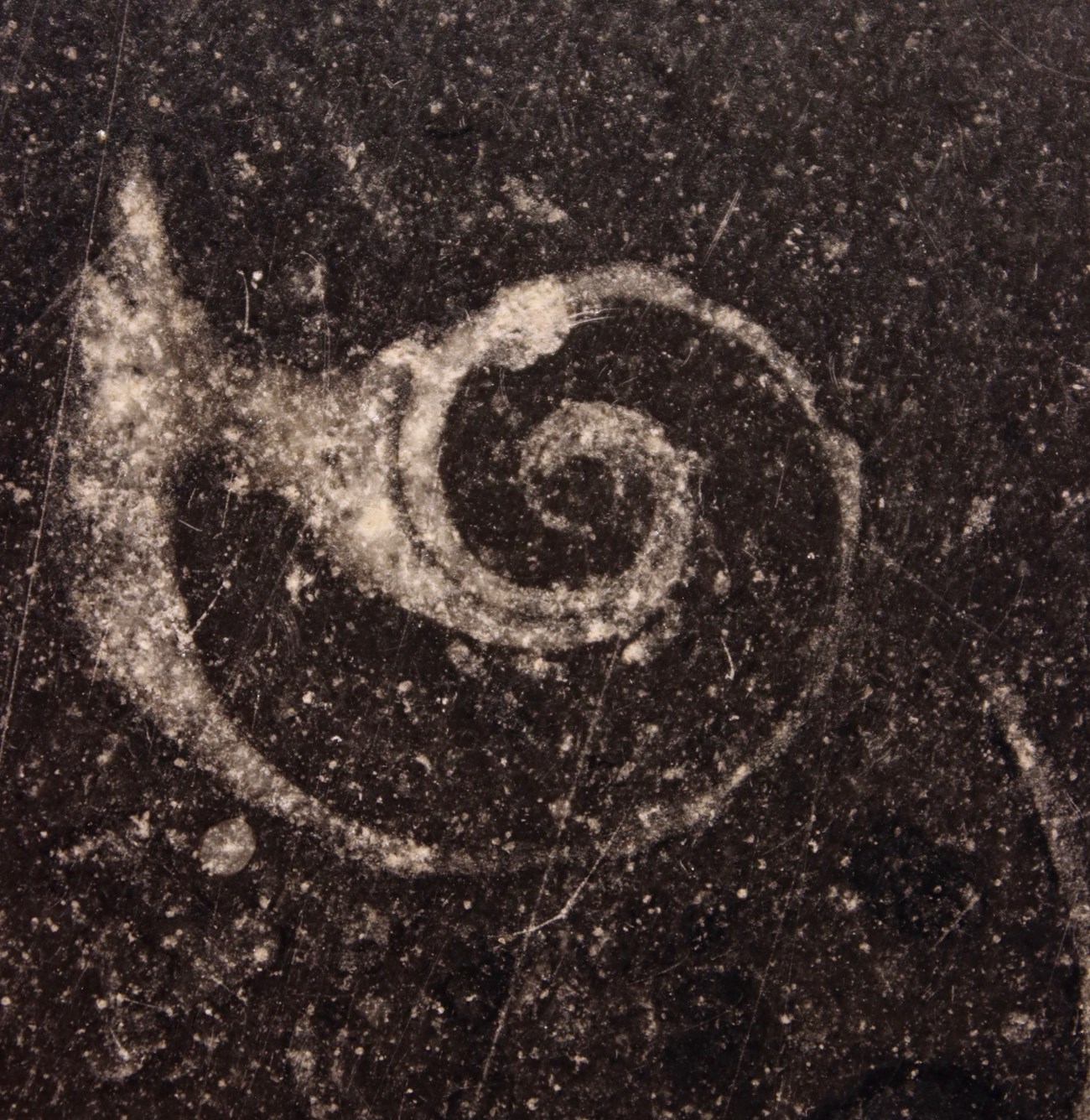
NPS photo by Karl Schaffenburg.
These animals are known for carrying their home on their backs. As a snail grows larger, it adds calcium carbonate to the outer-most edge of its shell to spiral it outward and effectively create an addition to its home. Unlike modern hermit crabs, who must hunt for larger shells to move into when they grow to larger, gastropods such as Maclurites magna retain the same shell their whole lives.
Among the most common fossils present are crinoids, also known as sea lilies. As seen in the image below there are many different sizes present in the flooring. What makes the transverse view particularly interesting is the distinct star shape present in the column structure of the stem.
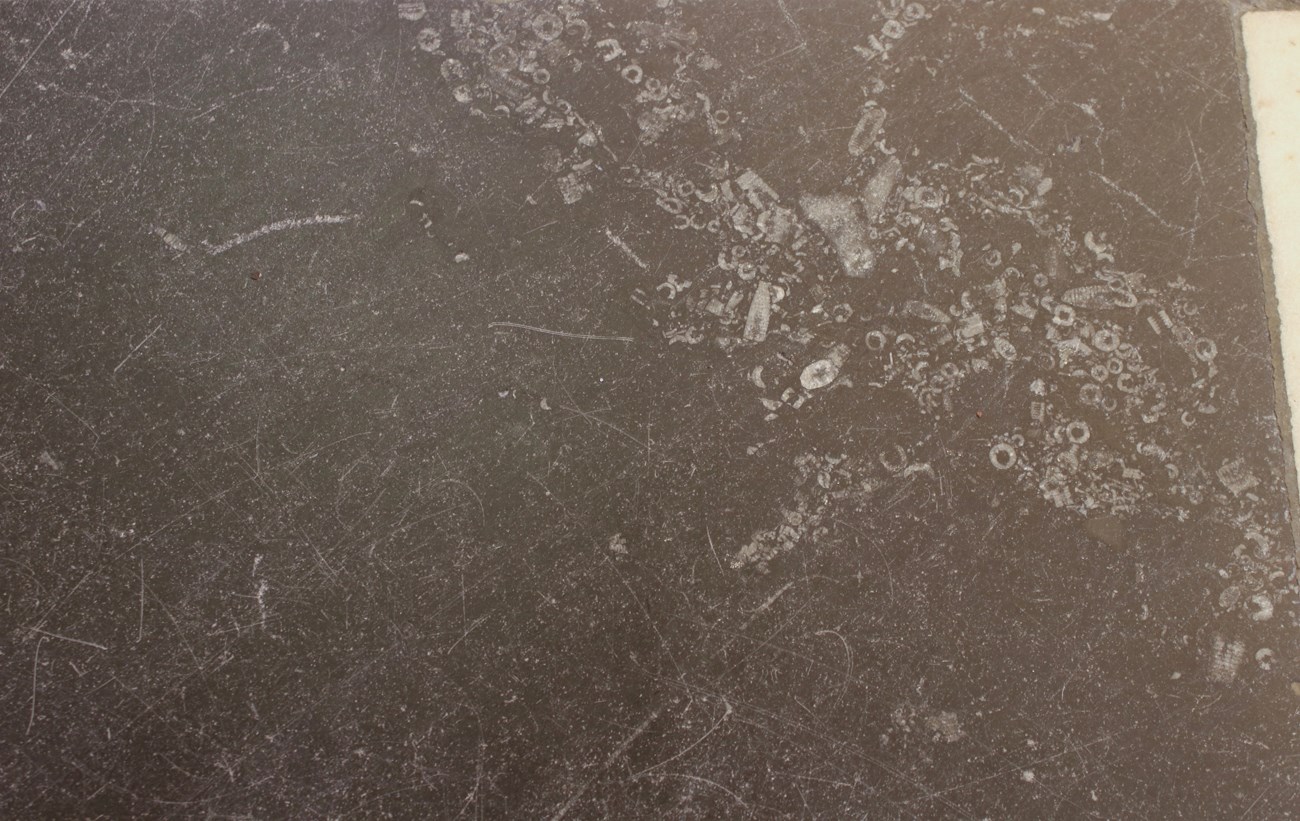
Cross-section of crinoid stems.
NPS photo by Karl Schaffenburg.
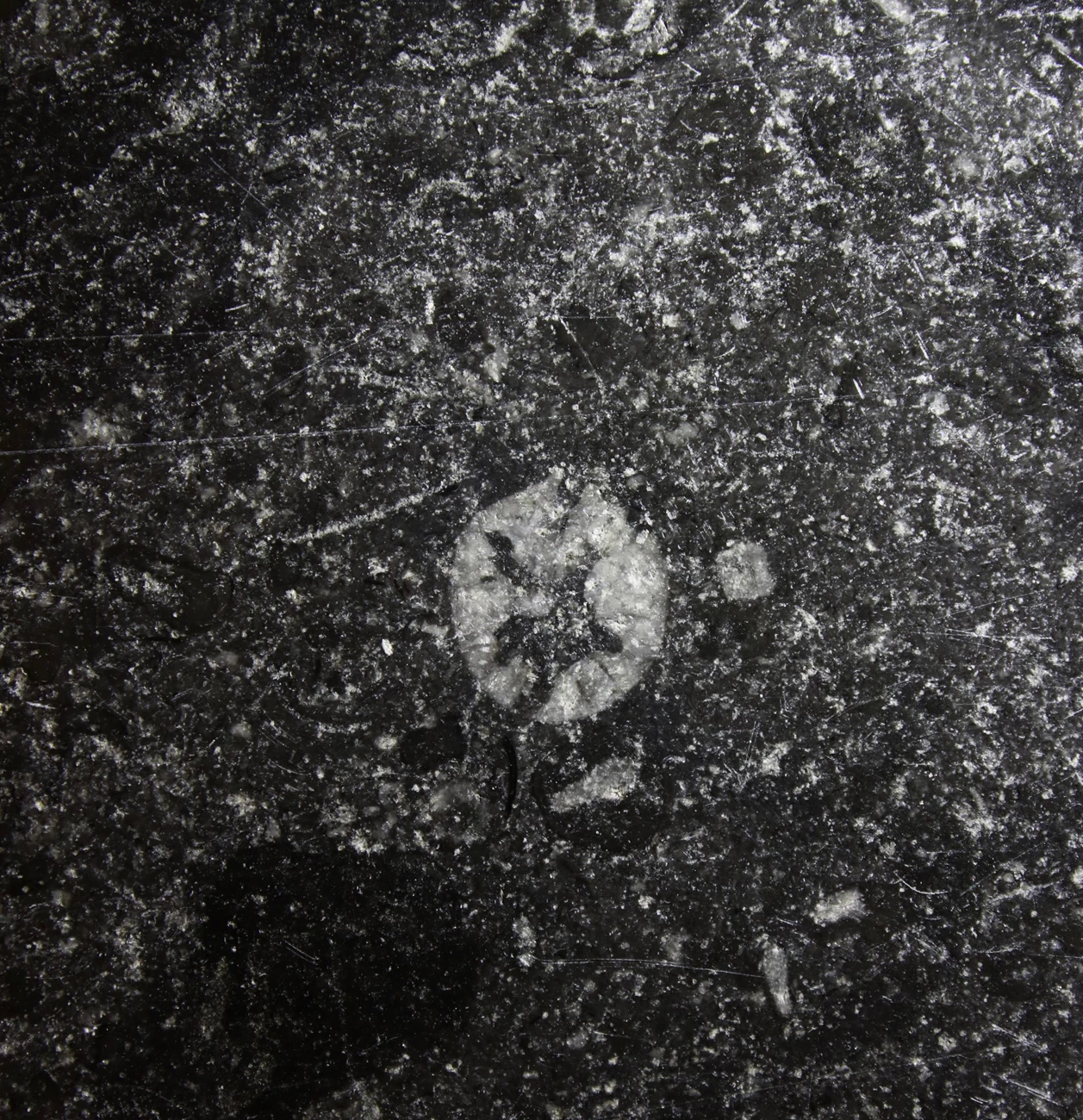
NPS photo by Karl Schaffenburg.
What was once thought to be fossilized leaves by Park Rangers are now known to us as solitary rugose corals, also known as horn corals. Shaped like a bull’s horn, horn corals belong to the order of coral known as Rugosa, meaning “wrinkly skin.” There are numerous examples of this coral all over the Bank, some of which like the one pictured below allow us to feel the wrinkly texture of the horn coral.
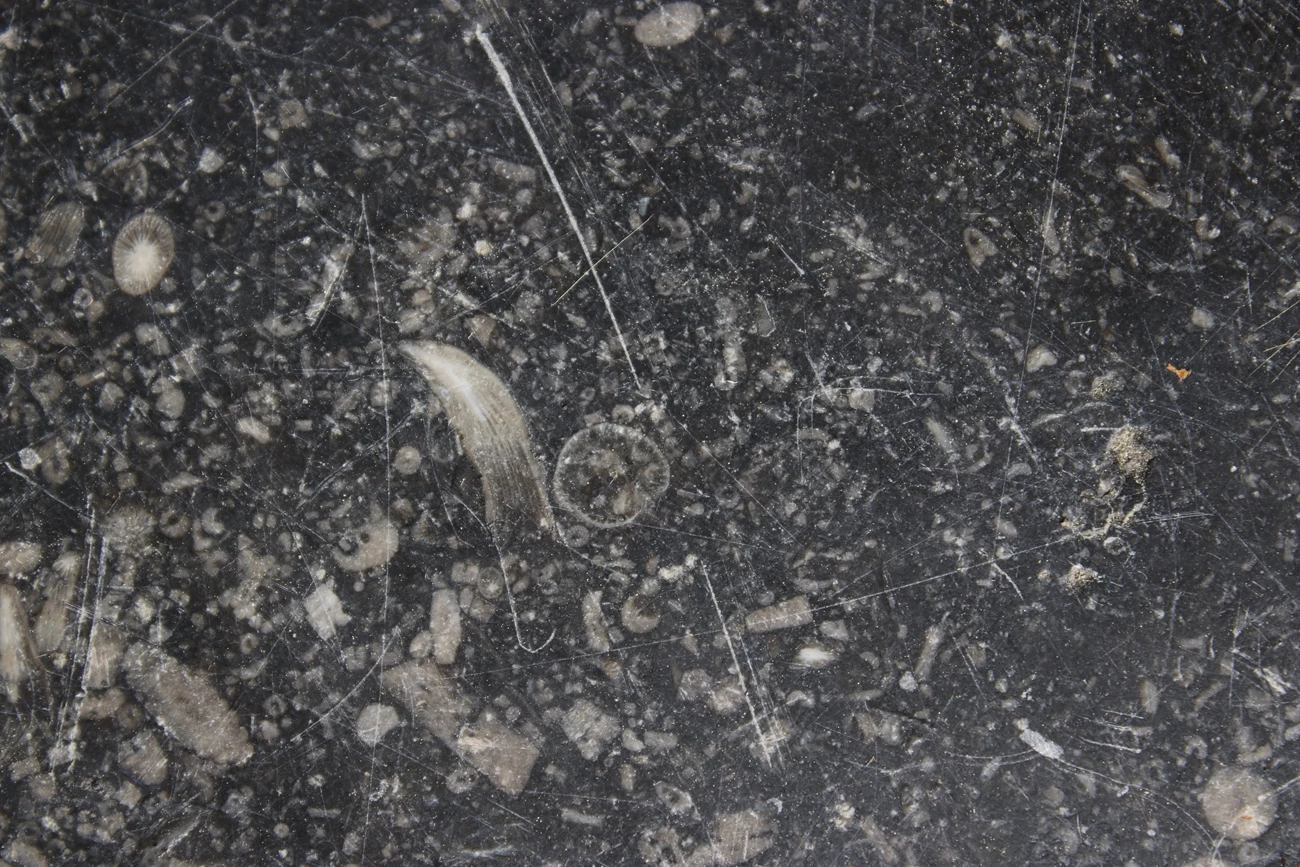
NPS photo by Karl Schaffenburg.
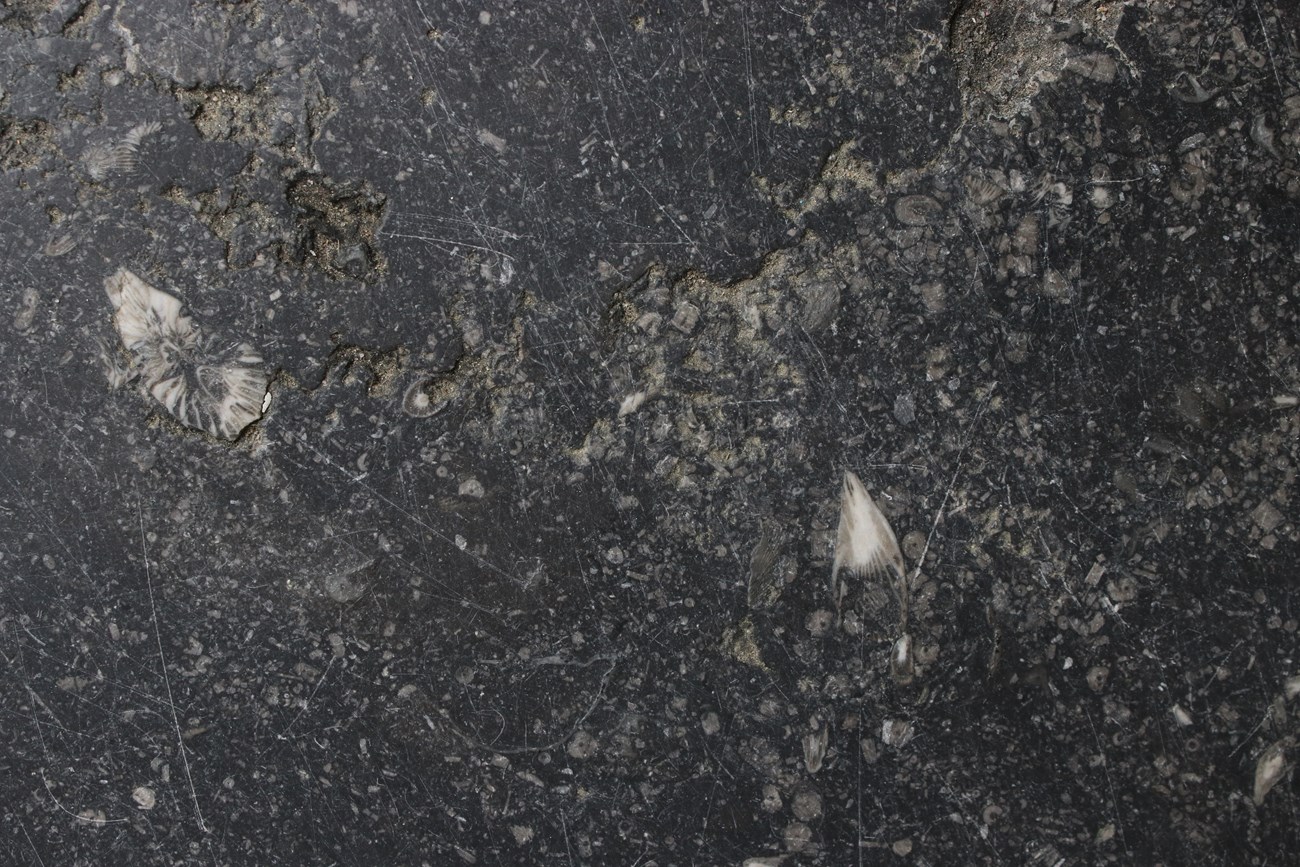
NPS photo by Karl Schaffenburg.
The rarer fossils of the Bank include one or two species of cephalopods and one clear example of a tabulate coral. There are only two examples of cephalopods in the Bank, representing either Stereospyroceras champlainense or Stereospyroceras clintoni. As seen in the image below the chambered structure of the shell can be still be seen.
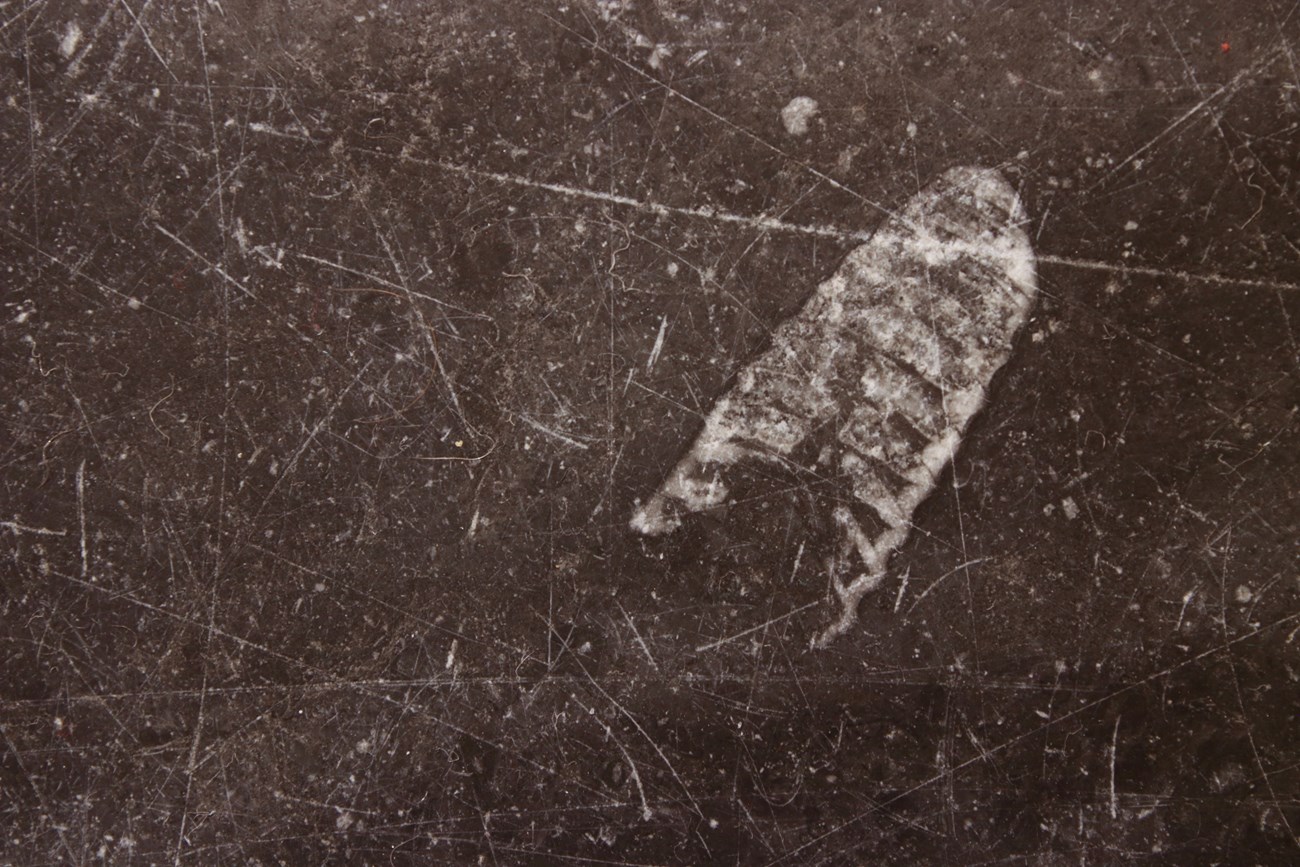
NPS photo by Karl Schaffenburg.
The rarest example of Ordovician fossils in the Second Bank is the tabulate coral. The one and only tabulate coral in the Bank is located inside the walkway of the front door and is walked over daily by visitors. Strangely, this fossil is the most intact out of all of the examples in the floor. The honeycomb structure of this colonial coral can be felt in the floor despite about 160 years of wear and tear.
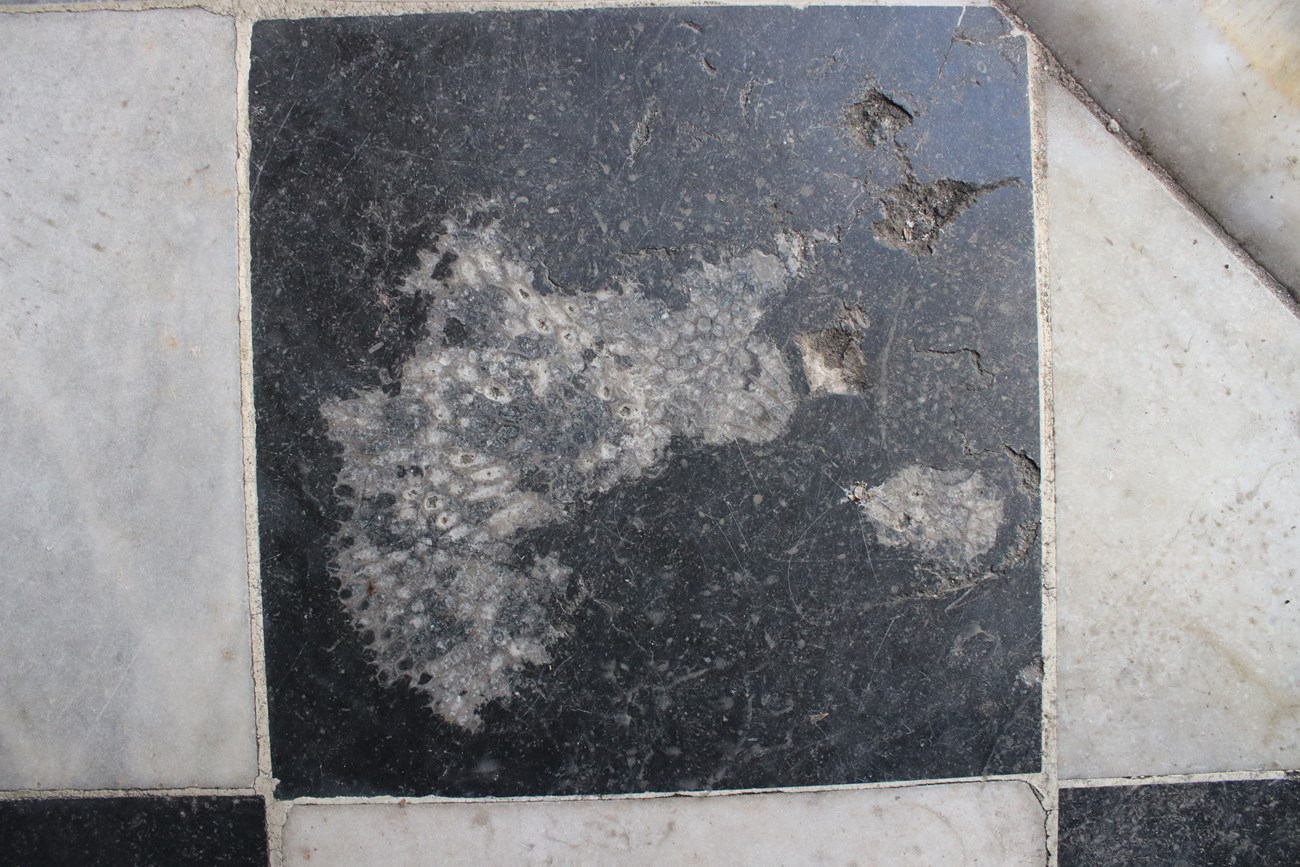
NPS photo by Karl Schaffenburg.
From Independence Hall to the Liberty Bell, no one expects fossils to be in a 19th century bank within Independence National Historical Park. Today you can visit the “People of Independence” exhibit in the Second Bank of the United States to see the fossils as well as more than 195 original 18th and 19th century portraits.
Acknowledgements
Thank you to Terry Papavasilis, INDE Park Guide (former), for her research contributions to this project.
Suggested Readings
Teresi, D. (January 2007). “What’s the World’s Oldest Communal Ocean Reef Doing in the Green Mountain State?” Smithsonian Magazine.
U.S. Department of the Interior, National Park Service. (1970). The Interior of the Second Bank of the United States Historic Structures Report. Norman M. Souder. Washington, D.C.: Office of History and Historic Architecture, Eastern Service Center.
Welby, C.W. Paleontology of the Champlain Basin in Vermont. Technical Paper No. 1. Vermont Development Department, Vermont Geological Survey. Montpelier, VT: Vermont Development Department, 1962.
Perkins, G.H. (1903). Report of the State Geologist on the Mineral Industries and Geology of Certain Areas of Vermont. Montpelier, VT: Argus and Patriot Printing House, 1904.
Last updated: May 22, 2020
